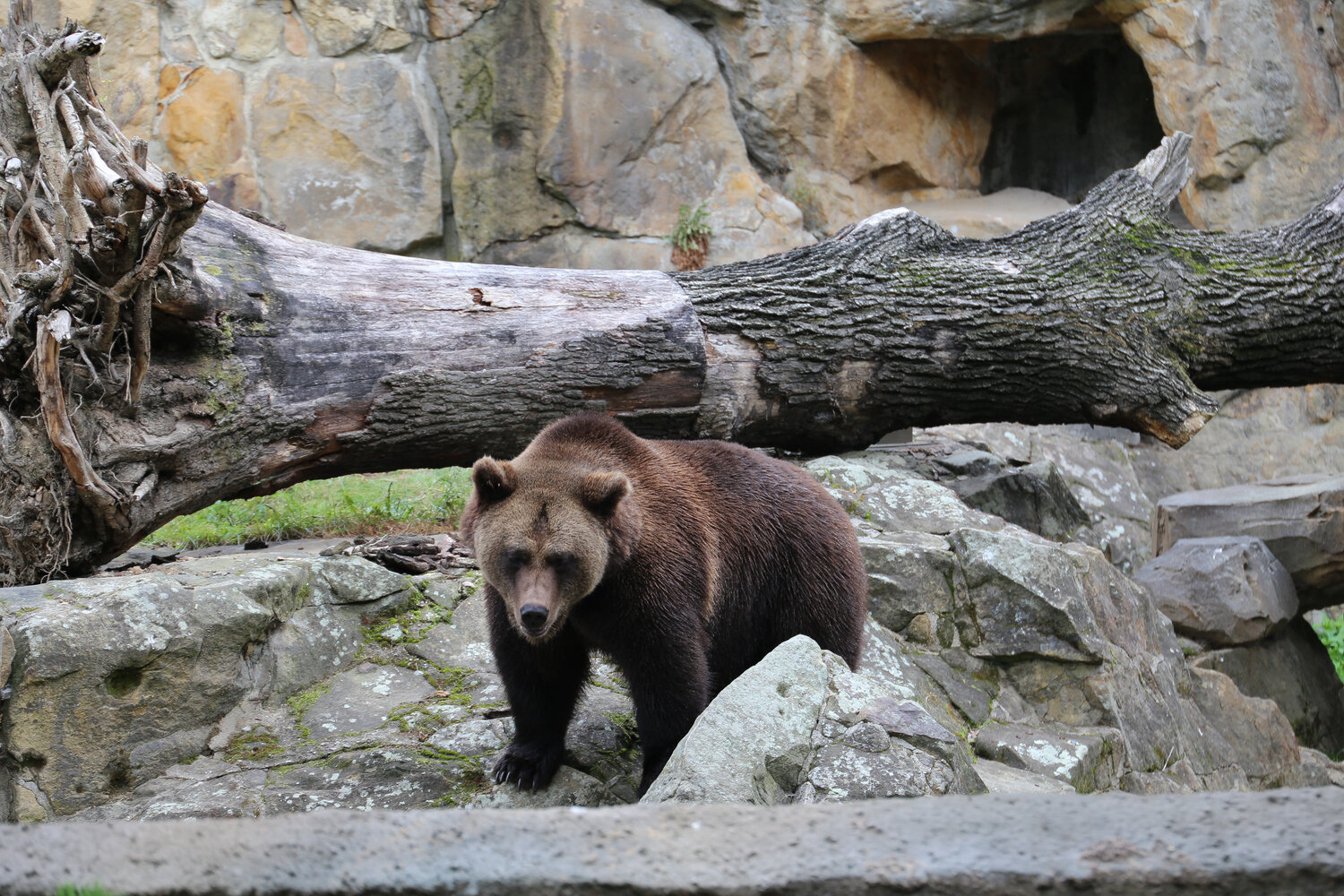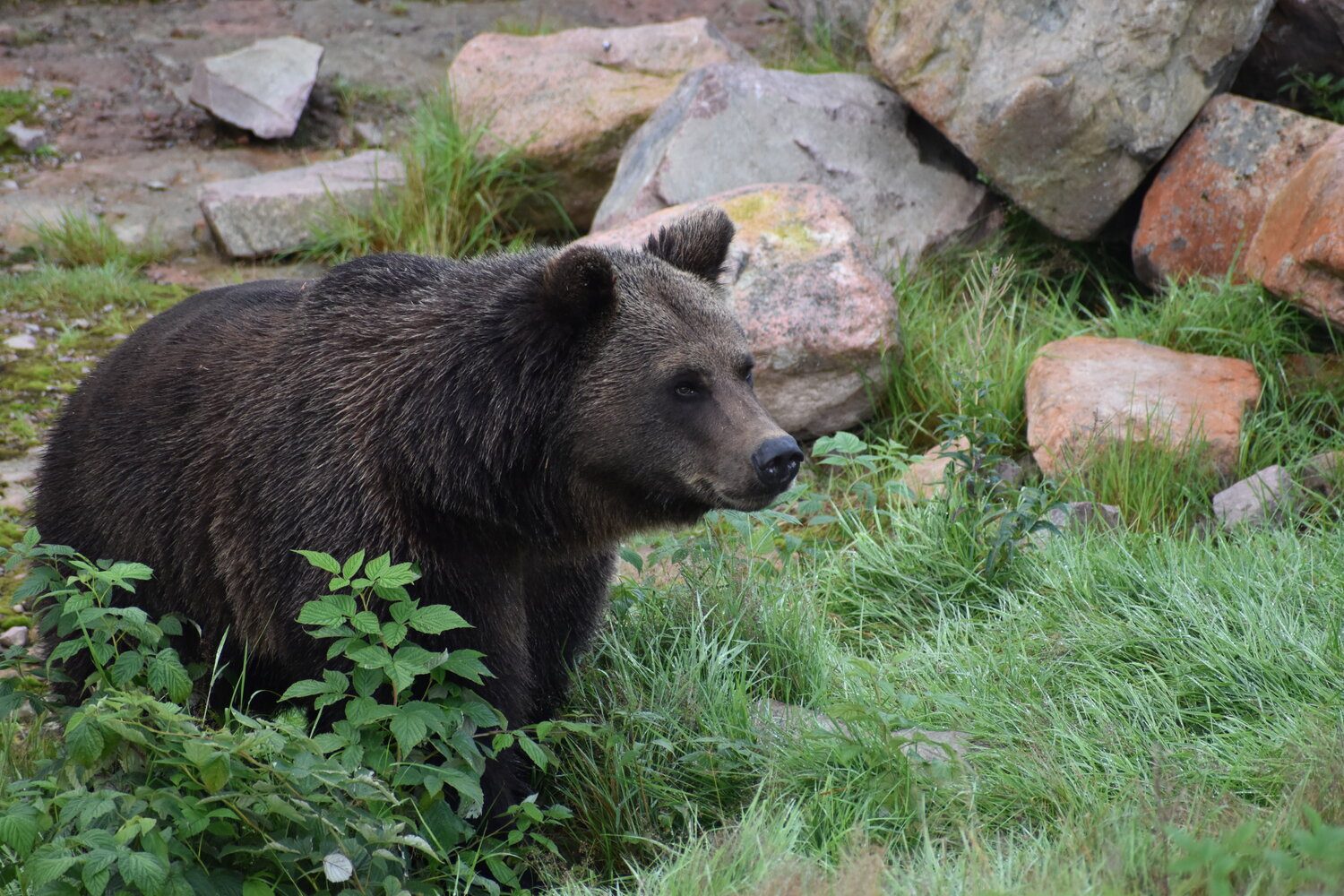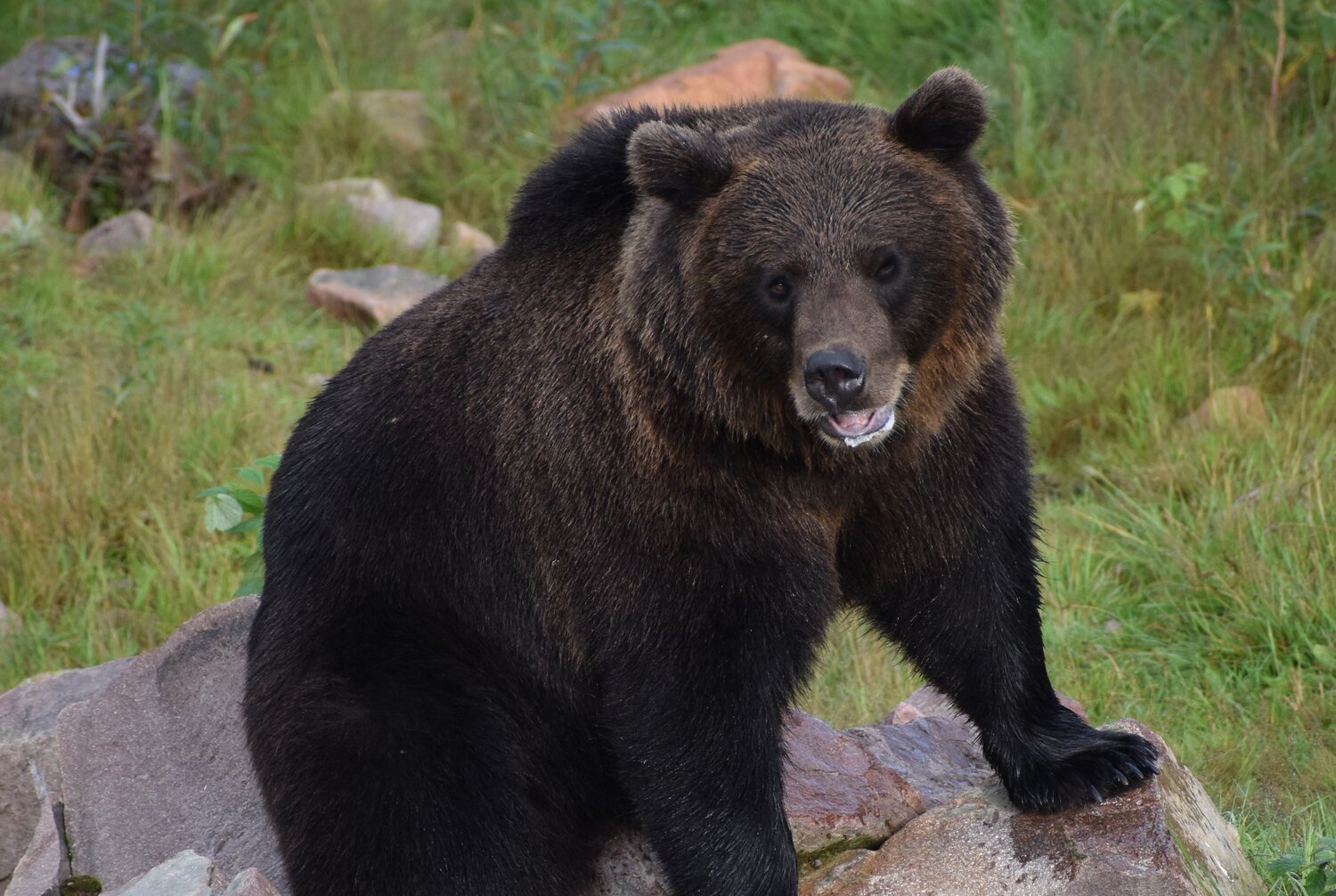A highly symbolic animal has returned to Zoo Berlin: the brown bear. Berlin has always been the capital of bears, with the animal gracing all manner of things associated with the city from its coat of arms to its manhole covers. And now, after seven years of absence, European brown bears are back at Zoo Berlin. The animals have come from Orsa Predator Park in Sweden, which will soon be closing its gates. As part of the European Endangered Species Programme (EEP) for brown bears, Berlin was selected as the new home for the three brothers Lucifer, Lillebror and Momoa (all four years old). The new arrivals are currently getting accustomed to their new habitat and their neighbours, the Eurasian wolves. They should be on view to Zoo visitors by the beginning of Berlin’s autumn school holidays at the latest.
The bears’ home, which took about a year to renovate, is designed to resemble their habitat in the wild, with rock caves and dead wood. Another new addition are various feeders with automated dispensing mechanisms. These provide the animals with variety and foster natural behaviour, as brown bears living in the wild spend most of the day foraging. The bears can also find a sweet “sap” several times a day at a specially built “honey tree”. Although brown bears count among the world’s large predators, they actually eat a vegetarian diet for most of the year – mainly berries, fruits, roots, grasses and herbaceous plants.
Brown bears disappeared from large parts of their original European range due to hunting and habitat destruction. In Germany, too, brown bears have been considered extinct for over 150 years, despite repeated sightings close to the country’s borders. Brown bears have since returned to neighbouring European countries including Italy, Austria and France. “Bears play an important role in their natural habitat,” explains biologist Christian Kern. “They spread a wide range of seeds, and they ensure the health of their ecosystem by eating dead and sick animals.” Kern admits, however, that the return of the bear to Europe h
A highly symbolic animal has returned to Zoo Berlin: the brown bear. Berlin has always been the capital of bears, with the animal gracing all manner of things associated with the city from its coat of arms to its manhole covers. And now, after seven years of absence, European brown bears are back at Zoo Berlin. The animals have come from Orsa Predator Park in Sweden, which will soon be closing its gates. As part of the European Endangered Species Programme (EEP) for brown bears, Berlin was selected as the new home for the three brothers Lucifer, Lillebror and Momoa (all four years old). The new arrivals are currently getting accustomed to their new habitat and their neighbours, the Eurasian wolves. They should be on view to Zoo visitors by the beginning of Berlin’s autumn school holidays at the latest.
The bears’ home, which took about a year to renovate, is designed to resemble their habitat in the wild, with rock caves and dead wood. Another new addition are various feeders with automated dispensing mechanisms. These provide the animals with variety and foster natural behaviour, as brown bears living in the wild spend most of the day foraging. The bears can also find a sweet “sap” several times a day at a specially built “honey tree”. Although brown bears count among the world’s large predators, they actually eat a vegetarian diet for most of the year – mainly berries, fruits, roots, grasses and herbaceous plants.
Brown bears disappeared from large parts of their original European range due to hunting and habitat destruction. In Germany, too, brown bears have been considered extinct for over 150 years, despite repeated sightings close to the country’s borders. Brown bears have since returned to neighbouring European countries including Italy, Austria and France. “Bears play an important role in their natural habitat,” explains biologist Christian Kern. “They spread a wide range of seeds, and they ensure the health of their ecosystem by eating dead and sick animals.” Kern admits, however, that the return of the bear to Europe harbours great potential for human-wildlife conflict. “We therefore hope that our new exhibition will foster a fascination for bears while also promoting peaceful coexistence between humans and bears in Europe,” he explains. “This will be achieved largely by society’s willingness to allow the return of the bears and by making conscious decisions as to how we to deal with any conflicts.”
The brown bears at Zoo Berlin will be accompanied by an interactive exhibition about the species and its natural habitat. In addition to more lighthearted topics such as hibernation, the exhibition also discusses the problems that can arise when humans and brown bears meet. “As a long-standing symbol of our city, the brown bear not only has a permanent place in the hearts of Berliners, it also now has a home again at Zoo Berlin,” says Zoo and Tierpark Director Dr Andreas Knieriem. “More than 3.6 million people from near and far visit Zoo Berlin every year. We want to use the opportunity to introduce those people to the fascinating beauty of animals and plants and help foster a respectful attitude towards the natural world.”
rbours great potential for human-wildlife conflict. “We therefore hope that our new exhibition will foster a fascination for bears while also promoting peaceful coexistence between humans and bears in Europe,” he explains. “This will be achieved largely by society’s willingness to allow the return of the bears and by making conscious decisions as to how we to deal with any conflicts.”
The brown bears at Zoo Berlin will be accompanied by an interactive exhibition about the species and its natural habitat. In addition to more lighthearted topics such as hibernation, the exhibition also discusses the problems that can arise when humans and brown bears meet. “As a long-standing symbol of our city, the brown bear not only has a permanent place in the hearts of Berliners, it also now has a home again at Zoo Berlin,” says Zoo and Tierpark Director Dr Andreas Knieriem. “More than 3.6 million people from near and far visit Zoo Berlin every year. We want to use the opportunity to introduce those people to the fascinating beauty of animals and plants and help foster a respectful attitude towards the natural world.”


